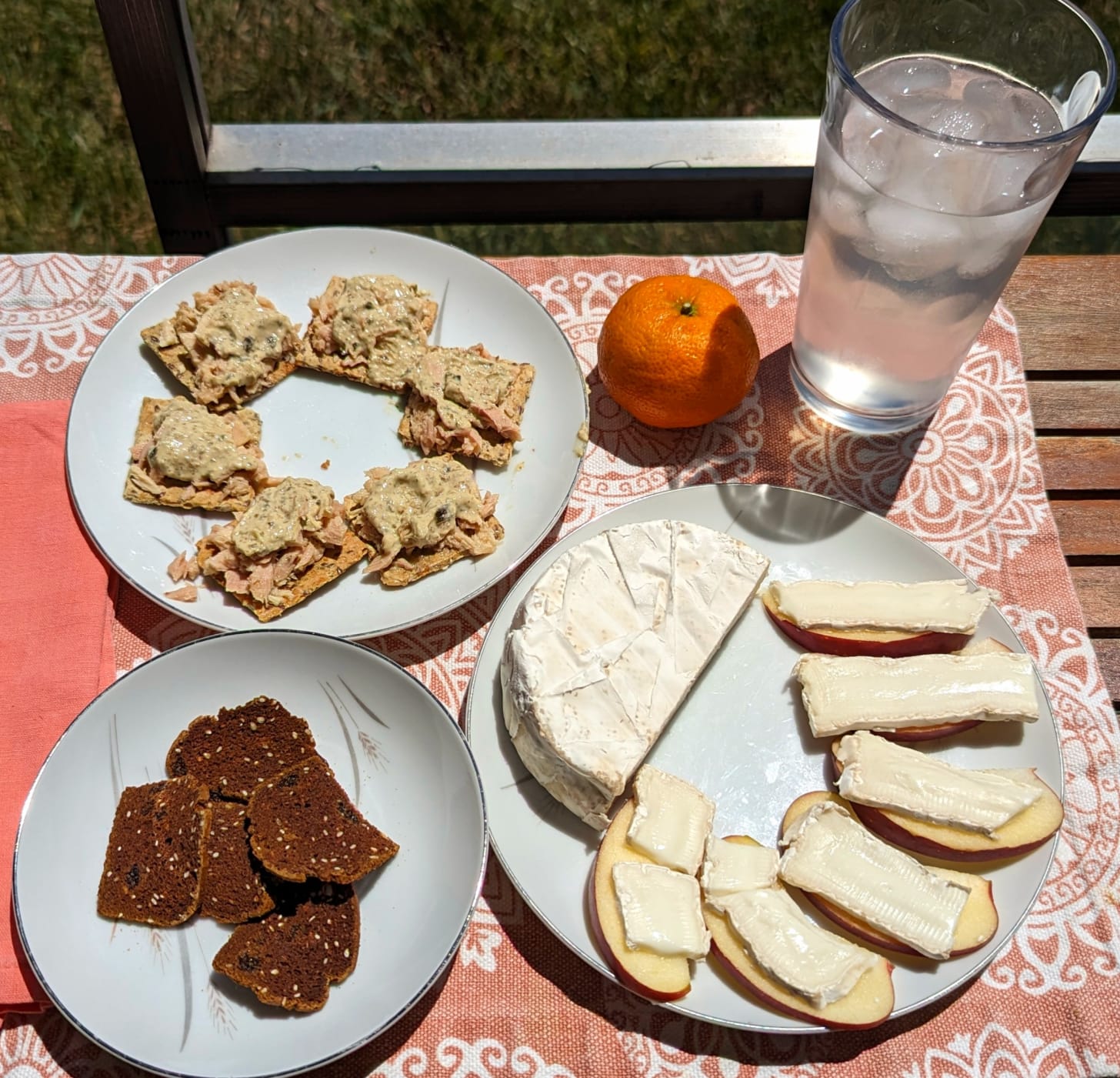What's For Lunch?
Or should you skip lunch?
This unconventional-looking meal was my lunch a few days ago. On some busy days, I might just skip lunch and have a hard-boiled egg and mixed tree nuts on the go. Be sure to plan for these days so you are not tempted by fast food or vending machine food that will poison your body, give you cravings, and make you hungry again in two or three hours.
If you avoid grains, sugar, and processed food in all your meals, you will avoid food cravings altogether, which will make it easier to skip lunch if you want to. Or combine your first two meals into a late brunch, which helps shrink your time-restricted eating window and has significant health and longevity benefits.
However, I rarely do this because of one thing: protein. We start losing muscle mass after age 30, and by age 60 or later, this can lead to sarcopenia, a muscle wasting condition that increases the risk of serious falls, loss of stamina, and the ability to perform daily activities. Because I am in my mid-seventies, this is a concern of mine. Thankfully, sarcopenia can be prevented and cured with resistance exercise and an adequate amount of protein to build muscle.
Many people tend to eat most of their protein at one meal, usually in the evening, but protein is harder than most things to digest and metabolize. That 12-ounce steak you ate last night? Half of it might have gone to fat. Your body needs a greater amount of quality protein as you age, but spread out your protein consumption over three meals so your body can use it. That is why I eat lunch or a snack — it is an opportunity to get the protein I need.
Here is what I ate for lunch and some alternatives:
Tuna on Crackers
The wild-caught albacore tuna in olive oil on non-grain crackers is the center of the meal for me. I ate half a can of tuna, which gave me about 16 grams of protein along with a lot of healthy Omega-3 fats. I topped the tuna with some refrigerated spinach artichoke sauce (see picture below) for a great taste. The crackers were from Everybody Eat, which I discovered recently at Whole Foods, where I found most of the items in this meal.
Protein alternatives for this lunch or snack include other types of canned fish (salmon, anchovies, skip jack, etc.) or almond/hazelnut butter on the crackers, left-over chicken from dinner, mixed tree nuts, eggs, goat cheese, or a lettuce salad with a hard boiled egg or two.
Goat Brie on Apple Slices
This combination is a taste treat and comes with 5-8 grams of protein, lots of healthy fats, and fiber and phytonutrients in the organic apple slices. Because of the fat in the cheese, it is very satiating. The half round is just for reference — I only ate the brie on the apples shown.
My main alternative to this combination would be other types of goat cheese on apple slices or non-grain crackers. Another favorite substitute is half of an avocado, chilled and sprinkled with herbs, salt and pepper.
The products used for this meal are shown in the picture below:

Buckwheat Crackers
I found these crackers while traveling, but not at Whole Foods. I have not seen them since at retail outlets, but you can order them from Amazon or the manufacturer in Maine. They are some of the best non-grain crackers I have found and would also be excellent with goat brie or other cheese. They come in four varieties, a couple of which I have yet to try (Thyme & Fig is my favorite).
Buckwheat should not really have “wheat “ in the name because it is not wheat, or even a grain, but a seed that is ground into flour, in this case. It is still a carbohydrate, but has no gluten or grain, and is much more nutritious and safer than a grain flour. It is sometimes called a pseudocereal and in seed form, can be boiled and eaten for breakfast.
You may be able to find a variety of other crackers made from buckwheat or almonds, either online or at a grocery or health food store, but try to avoid those with rice, stabilizers like xanthan gum, or a long list of ingredients you do not understand.
Fruit
I enjoy fresh fruit, especially a small orange, to finish my lunch or snack. Most whole fruit (not juice) has fiber, phytonutrients, vitamins, and great taste—and is key for your body to thrive. You can substitute berries, kiwi, half of an apple or pear, peach, black plum, or other fruit. Having the fruit at the end of the meal limits the modest glycemic impact on your insulin, but avoid tropical fruits like a whole banana or a large amount of pineapple.
Drinks
My drink of choice for lunch is filtered water with lemon and/or lime juice. If you can tolerate caffeine at this time of the day and are sure it will not affect the length or quality of your sleep, you might try green or black tea, either hot or chilled. Otherwise, the variety of herbal teas offers many other choices. If necessary, you can add a tiny amount of erythritol or allulose, but try to avoid all sweeteners if you can. If the tea is too bitter for you, brew black or green tea with a fruit tea, such as raspberry or blackberry.
Next up is dinner!




You are welcome! Most dips like this include lots of unhealthy ingredients like emulsifiers and refined oils (like soybean or vegetable oil). It is nice to find some refrigerated products without them, even at Kroger's.
I like these ideas, George, and I’m definitely going to look for the spinach/artichoke dip. Great idea!